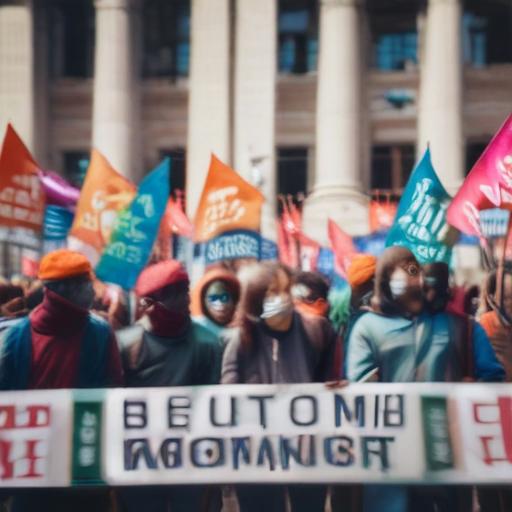On a sweltering day in May, public employees, organized under groups like the Federal Unionists Network (FUN) and Step Up Louisiana, rallied outside Rep. Steve Scalise’s office in Metairie, Louisiana. This demonstration is part of a growing movement against actions taken by former President Donald Trump, particularly his executive order issued on March 27, which threatens collective bargaining rights for more than 800,000 federal employees. The order purports to use a “national security” justification but has been criticized as a retaliatory strike against unions that oppose Trump’s policies.
The order affects a substantial portion of the federal workforce, with estimates suggesting that around 67% of these employees would lose their bargaining rights if the measure is fully enacted. The implications of this decision could lead to a significant decrease in unionized workers across both public and private sectors—a reduction by an estimated 5 to 10 percent nationwide. Federal agencies impacted by this order include key departments such as Justice, Defense, Veterans Affairs, and Health and Human Services.
As layoffs have already commenced, the Economic Policy Institute warns that this could represent the steepest increase in federal job cuts since the census takers were laid off in 2020. Legal battles are unfolding in response to the executive order, with recent court rulings allowing certain IRS workers to maintain their union representation. However, labor leaders believe the larger fight will extend beyond the courtroom and into workplaces and on the streets.
Chris Dols, a dredging expert with the Army Corps of Engineers, expressed optimism about the current level of activism among federal workers. He believes that there is a growing realization among public employees about the necessity to organize against these threats to their rights. Dols stated, “The good news is that there are an ever-growing number of federal workplaces where folks are drawing this conclusion that they do have to figure out how to fight.”
Historically, this struggle mirrors events from the past, such as Wisconsin’s 2011 protests against Gov. Scott Walker’s Act 10, which stripped state workers of collective bargaining rights. That movement was pivotal in igniting a national conversation about workers’ rights and led to significant protests across various states.
Labor experts point out that if federal workers can establish solidarity and collective action, they can potentially turn the tides against the administration’s efforts. This moment, they argue, must be approached with strategic organizing that engages not just those in the federal workforce, but also the broader public, fostering alliances that advocate for common interests.
As federal employees rally for their rights and push for collective action, there remains a glimmer of hope. The ongoing efforts to educate the public about their critical roles in government and society could inspire a new wave of labor activism, reminiscent of past movements that have successfully challenged oppressive policies. The current situation calls for resilience and unity among workers, possibly paving a way for significant changes in labor relations in America.
